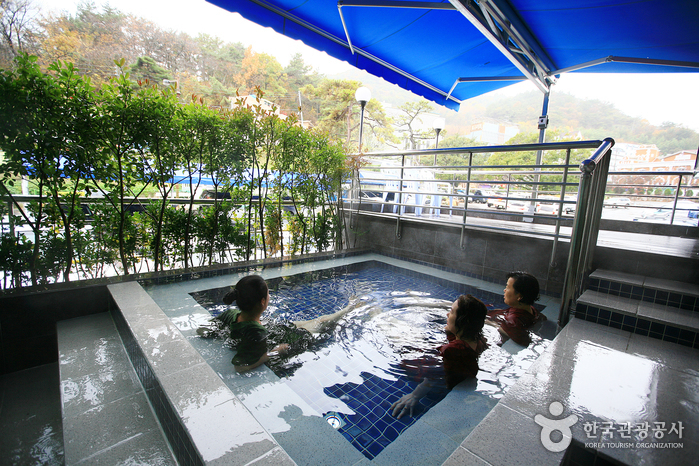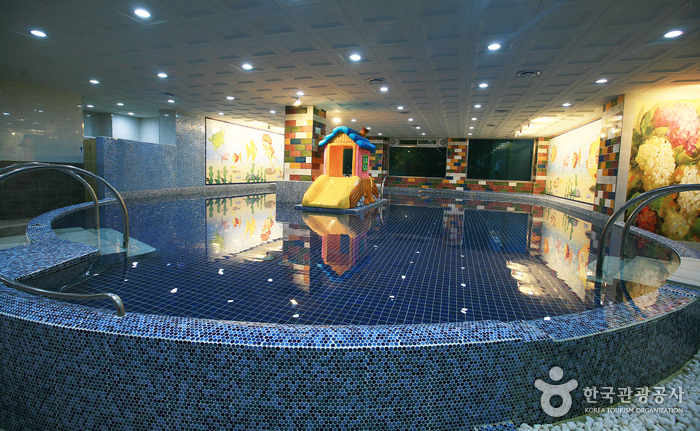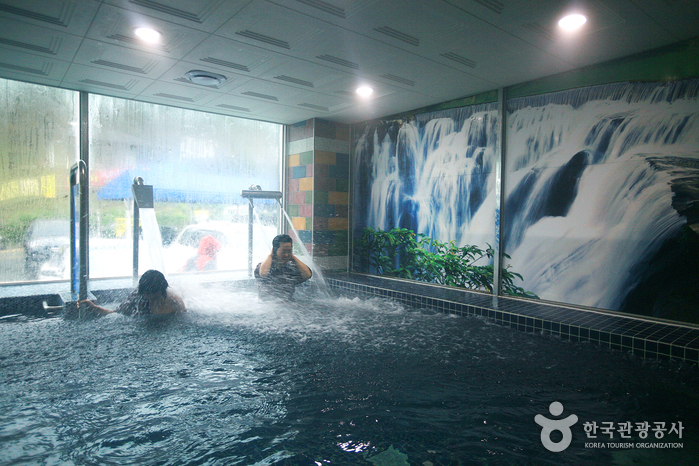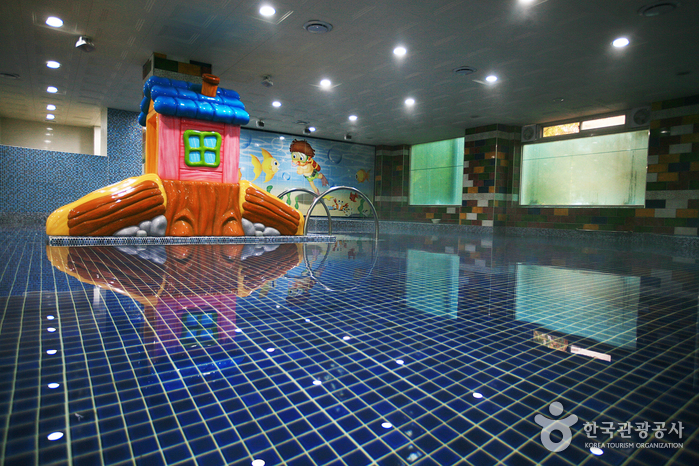Explanation
Also referred to as Buk-myeon Hot Springs after the name of the region, Mageumsan Hot Springs is 13 kilometers north of Rural Route 1045 from Euichang-dong in Changwon and takes approximately 20 minutes to get to by car. Mageumsan Hot Springs rises 200 meters above sea level, contains a slightly alkaline enriched water of 55℃ or more, and consists of over 20 mineral substances including natrium, radium, manganese, ion sulfate, and others. Mageumsan Hot Springs are known to be effective in helping arthritis, women's diseases, neuralgia, depression, etc., and are frequently visited by travelers.
Records of Mageumsan Hot Springs are listed in the ancient texts of King Sejong's Geographical Book, Survey on Civilization (Dongguk-yeojiseungnam), and more, illustrating that these hot springs were of great importance in ages past. The hot springs were temporarily closed in the later period of the Joseon Dynasty but were reopened by a man named Tokunaga from Japan. Later, Jin-Il Sohn, a resident of the area took ownership of the hot springs.
Outstanding scenery complements the hot springs with Cheonmasan Mountain (370m), Mageumsan Mountain
and Baekweolsan Mountain (400m) located nearby. In particular, there is a legend that surrounds Baekweolsan Mountain
and people like to climb this mountain and then relax by bathing in the hot springs.
Inquiry
55-298-4400
Information Use
Contact and Information : • 1330 Travel Hotline: +82-2-1330
(Korean, English, Japanese, Chinese)
• For more info: +82-55-298-4400
Parking facilities : Available
Day off : N/A (Open all year round)
Hours : 05:00-21:00
More information
Parking Fees
Free
Admission Fees
Bath: Adults 6,000 won / Children (ages 7 and under) 4,000 won
Bath + Water Playground: Adults 11,000 won / Children (ages 7 and under) 9,000 won
Family Bath: 20,000 won for two people for two hours Family Bath (Special bath room): 40,000 won for two people for two hours (two baths)
* Family Bath: 4,000 won for one additional child / 6,000 won for additional elementary · middle · high school students and adults
* General bath: Visitors over age 5 prohibited from bathing with opposite gender
Location
1167, Cheonju-ro, Uichang-gu, Changwon-si, Gyeongsangnam-do





 English
English
 한국어
한국어 日本語
日本語 中文(简体)
中文(简体) Deutsch
Deutsch Français
Français Español
Español Русский
Русский